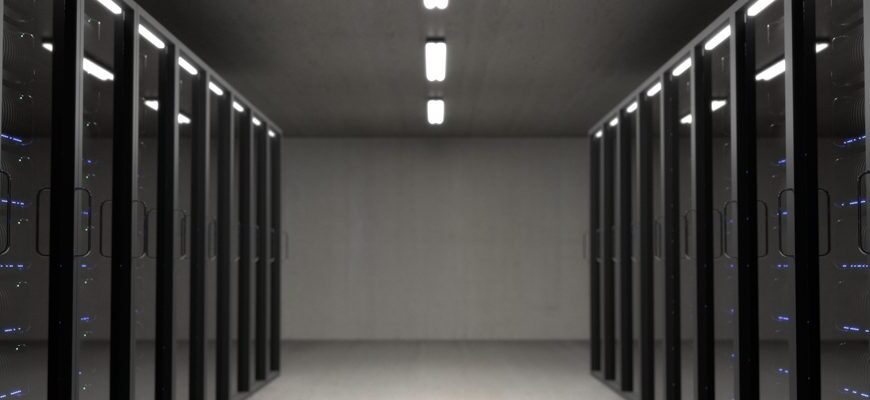The growth in global data traffic, as well as the demand for high computing power and storage, are primary factors driving the increasing demand for data centres, across organizations.
In fact, as per a new report by Technavio, the worldwide data centre market size is set to grow by USD 304.87 billion during 2020-2024, rising at a CAGR of over 17%. Clearly, data centres are in high demand across the globe.
Additionally, emerging trends such as IoT, cloud adoption etc. are dictating the adaptation of these data centres into the next generation.
So, how can you, as a value-added reseller, optimize and design a data centre structure for your clients? Here our experts have put together the best practices to keep in mind when you design a data centre –
Plan for the future –
Begin by understanding the client requirements – their short term as well as long term goals. The fast pace of today’s technologies means that the demands of a data centre will only increase with time. Hence, data centres must be able to respond to these changing requirements quickly and easily support increased workloads.
Plan for the future by answering the following questions –
- Location –
The right location can often determine the performance of your facility. Ensure that your prospective site has a large space that can house racks and larger components such as generators and cooling towers. The infrastructure should be optimized for space and resource allocation, instead of just filling up space with equipment. - Floor space –
How much space is needed to house the data centre and its infrastructure? What are the future requirements you foresee? While it is not always feasible to allocate floor space in advance, you can make the most of the available space by using flexible and scalable cabinets and racks. They should have adjustable rails, airflow management options, cable support and protection. The benefit here is that these will accommodate the growing requirements from the centre as and when required, etc.
Develop performance and cooling strategy –
Energy consumption, as you know, is one of the most critical variables for any organization, as data centres are significant consumers of energy. Overall, servers and data equipment make up over 55% of the total energy used, followed by the cooling equipment at 30%.
One of the first things you should look at is what type of cooling will be required. Some of the options available are –
- Air cooling – Many companies use air conditioners or chillers to cool their server racks. While widely used, this is not one of the most efficient methods of cooling.
- Water cooling – An alternative to air cooling is using water-based cooling systems, which are compact, energy-efficient and, hence, cheaper to operate.
- Localized cooling – Another option is where a unit is set up for each row – allowing for more precise cooling based on needs of each equipment row.
Moreover, you should also ensure a backup plan for your power and cooling requirements. Datacenter components do not respond well to fluctuations of temperature. When these lose power, they require total restarts, leading to downtimes, startup issues and loss of transit data.
Usually, organizations make use of backup generators to make sure 100% uptime for their data centres.
Manage airflow–
Ensuring proper airflow through the data centre can contribute to lower energy costs and higher efficiencies. A good data centre airflow management plan is a great way to keep your facility at the right temperature.
Develop an efficient airflow plan by leveraging the strategies below –
- Plan the main inlet for cool air and outlet of warm air.
- Set up hot and cold aisles by positioning server racks so that the front of one row faces toward the front of the next row.
- Install physical barriers between server racks for air containment.
- Deploy filler panels within each server row to feed chilled air directly to the equipment.
Also, choosing the right server racks will help use your equipment properly and ensure ample space for the future. Many new data centres have rows of empty racks that help to facilitate proper airflow until they are filled.
Optimize cabling –
Improper cable management can be a contributing issue to datacenter downtime. Avoid this possibility by organizing and storing all wiring correctly. One way to manage cables is to label and colour code them to make them easier to track and maintain. Using horizontal or vertical cable managers to untangle and streamline is another method.
Ensure security and support –
On average, the impact cost of a data breach to an organization is over $150 million in 2020. Many data centres contain business-critical data, making them particularly vulnerable to cybercrime.
To counteract this risk, implement strict security protocols for your clients, especially when dealing with cloud applications and on-site data storage. Additionally, ensure physical security measures such as restricted doors, biometric access and enclosed server racks.
Automate and monitor –
To maintain the performance of your client’s datacenter, it is important to have mechanisms in place that can monitor and report on power, cooling, and networking to inform management and help them plan for future capacity needs.
Detailed planning and monitoring can help ensure that the data centre you design has proper airflow and that the equipment is operating at the right temperatures. Besides, it will also help keep costs low, reduce inefficiencies and eliminate wastage for your customers.





